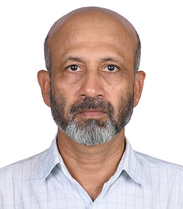
I am Kunjumon Vadakkan. I was born in Kerala, a southern state in India. I started my career as a family physician in 1988 soon after my studies (M.B.B.S) from Thrissur medical college under Calicut University. I then completed post-graduate studies (M.D) in biochemistry from Calicut medical college under the guidance of Dr. Leela Menon and Dr. Asuma Beevi. I studied basic electronics from the Television training institute, Francis road junction, Calicut as an evening course. Later, I joined the school of biotechnology at the Jawaharlal Nehru University as a research associate of the Council for Scientific and Industrial Research in the laboratory of Dr. Uttam Pati to study negative regulatory areas upstream of the p53 gene. Then, I worked at GB Pant hospital and Moulana Azad medical college, New Delhi as a senior demonstrator in the department of biochemistry under the University of Delhi.
Later, I moved to Canada and started working as a research assistant in Dr. Casey van Breemen's laboratory in the department of pathology and laboratory medicine, University of British Columbia. Then, I completed M.Sc. in neuroscience under Dr. Umberto De Boni and Ph.D. in neuroscience under Dr. Min Zhuo from the department of physiology & program in neuroscience at the University of Toronto. This was followed by one year of postdoctoral training with Dr. Mark Zylka at the University of North Carolina, Chapel Hill. At this stage, I realized the importance of learning methods used in physics to understand particles and fields that are not sensible to our sensory systems either directly or by simple indirect methods. I was convinced that the deep principles of these approaches will be useful to explore how the brain generates inner sensations within it. So, I decided to study physics and moved to Newfoundland, Canada. I took courses equivalent to two years of B.Sc. physics (including 3rd year modern physics & passed!) from the Memorial University. Learning a) about the history and principles behind invention of complex numbers, b) that to solve a system of linear algebraic equations having 'n' variables require at least 'n' number of non-redundant equations, and c) about discoveries of non-sensible particles and fields, reinforced me about the necessity to undertake a theoretical approach to solve the seemingly complex nervous system and test emerging solutions against findings in nature.
I then completed residency program in neurology from the division of neurology at the University of Manitoba and a fellowship program in cognitive neurology under Dr. Sandra Black and Dr. Mario Masellis at the University of Toronto. These were carried out with the thought that a novice can eventually understand how a car works normally, if that individual continues to watch broken cars being repaired for a long period of time. After doing a short fellowship in neurology at the Dalhousie University's division of neurology, I worked full time at the Neurosearch Center, Toronto to explore the hypothesis further for the next four years. Currently, I am in SIMATS university, Madras, India.
Th devastating nature of many neurological and psychiatric disorders remains a challenge. So many people are suffering. Fixing certain defects in a system requires understanding of the normal functioning of the system. This will become possible only by examining all the features that the system exhibits at various levels to find the governing principle that can interconnect all of them. Since generation of internal sensations is the most important and unique function of this system, a problem-set was formulated by keeping the first-person internal sensation of higher brain functions at the center, with the hope that it will allow searching for the basic units of operation by continuously asking the questions "What are the real conditions that the solution must satisfy?" (this is required to solve the system), “What else must be present for this to be possible?” (to understand the inter-connectable findings), and “Is there a mechanism that can be replicated in an engineered system?" (required for the gold standard test of a system that exhibits first-person properties). This approach has provided information regarding possible structure-function units and their interconnected nature that I have explained in my papers.
Hosting this website has not been a comfortable experience for me. But I pursued it because the problem at hand is a huge one and it was reasonable to think that deriving a mechanism for the nervous system functions and describing its suitability to explain a large number of findings from different levels simultaneously require a large space. Using this website, I have been able to communicate how several findings of the system started becoming inter-connectable when a mechanism that can generate inner sensations was derived. This site also provided much-needed inspiration to continue this work. Thank you for visiting. If you have any questions, please email me.
Only through open discussions and debates that we can take science forward. If your institution would like to have a presentation of semblance hypothesis or host a debate session, I will be very happy to participate. Please contact me. Attempts to falsify a hypothesis are part of the scientific method. They are highly welcome. If you agree, I will post all such communication in this website. Please contact me by email: k dot vadakkan@gmail dot com
To pause and ponder: When we say we don’t understand how the brain works, what we mean is that we don’t understand how it generates its most important function - first-person inner sensations of different higher brain functions within it (that we call "mind"). This means that we have to do/find something new that we are not familiar with. This is going to make us all uncomfortable, especially those who search and report those new things. It is only by risking that we can overcome the difficulty in solving this system. This is inevitable. Awareness of this is the most important thing. Everything else is secondary. Together, one day we should be able to say that we are not the same old earthlings! Article